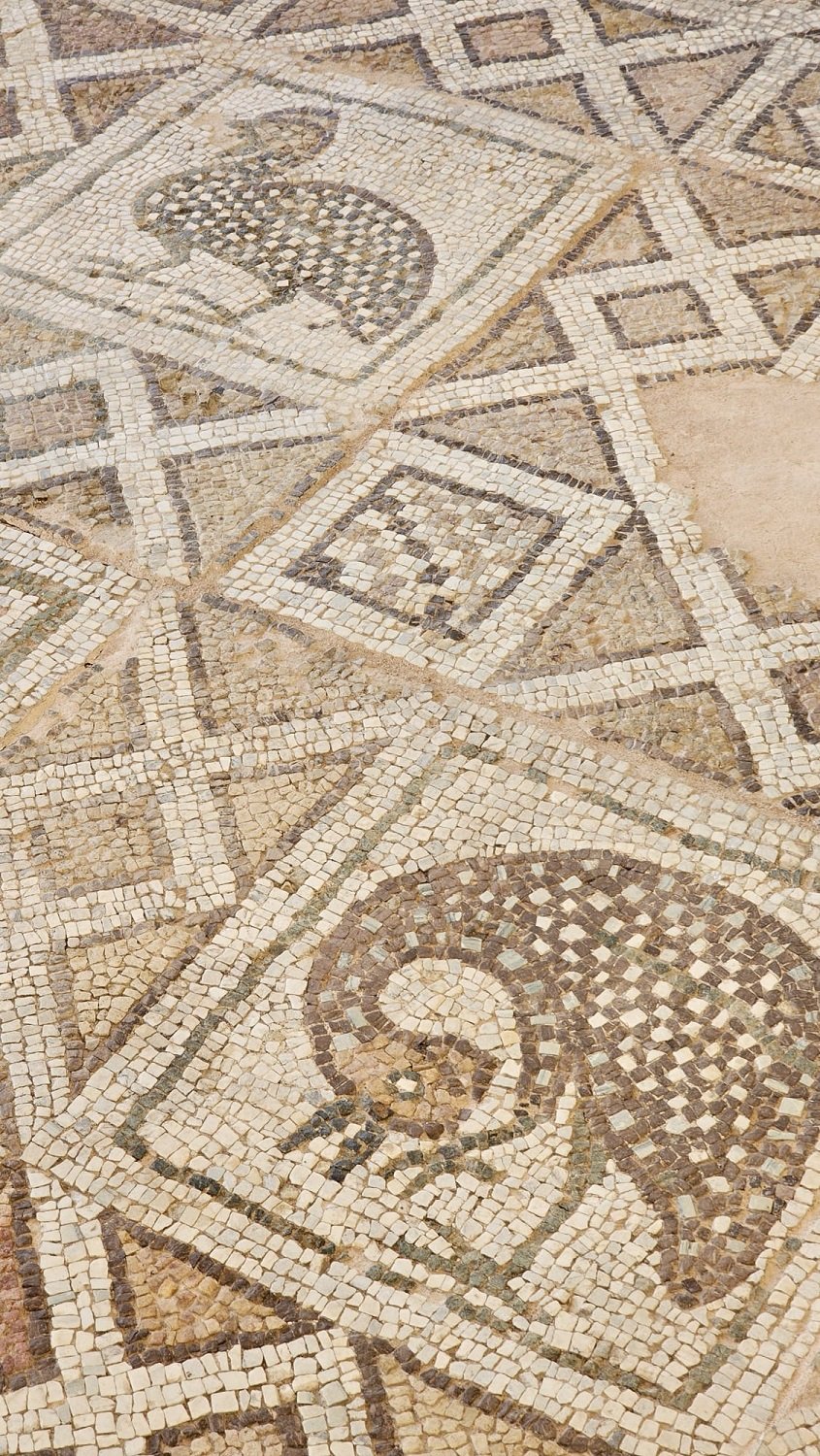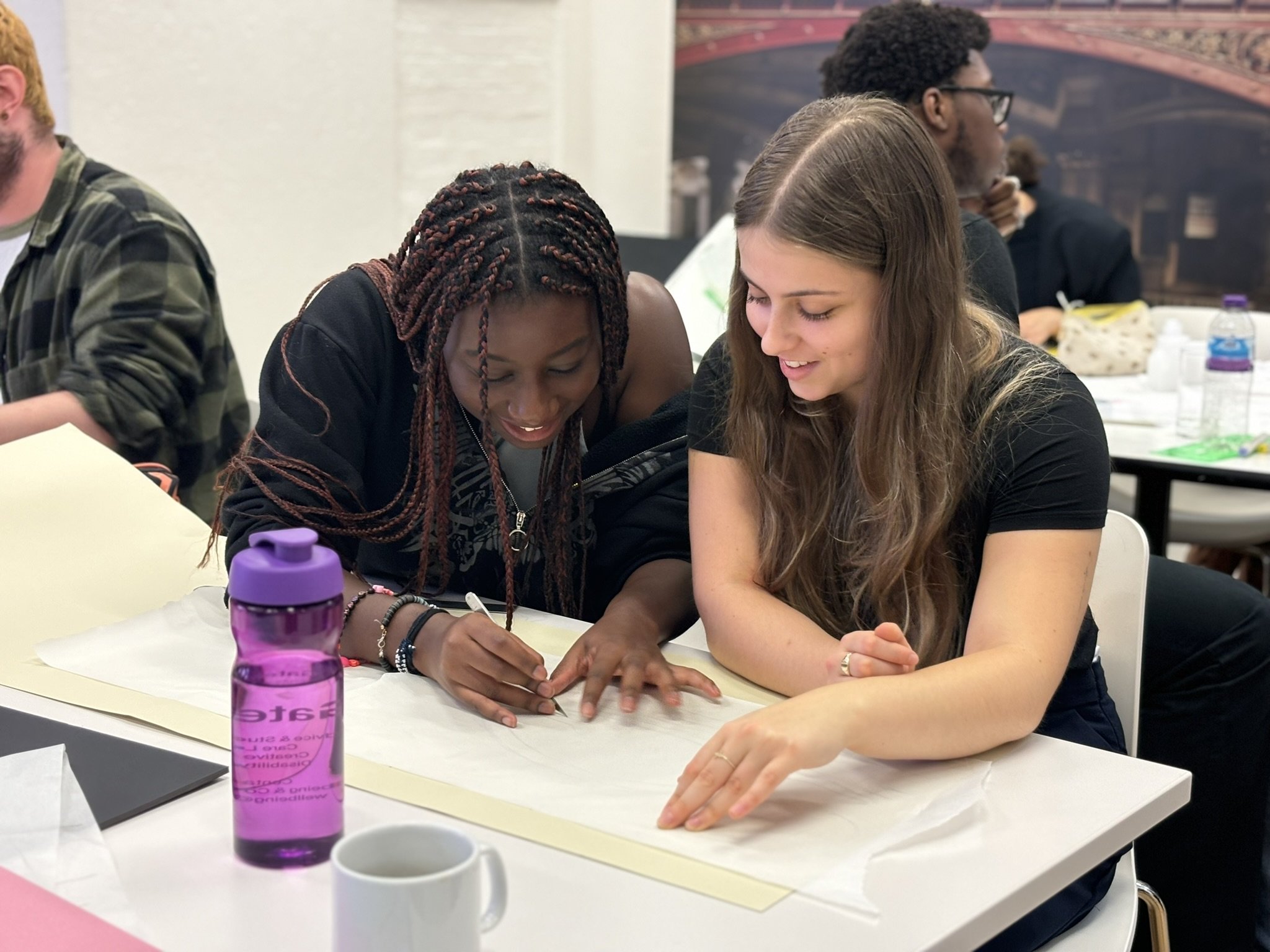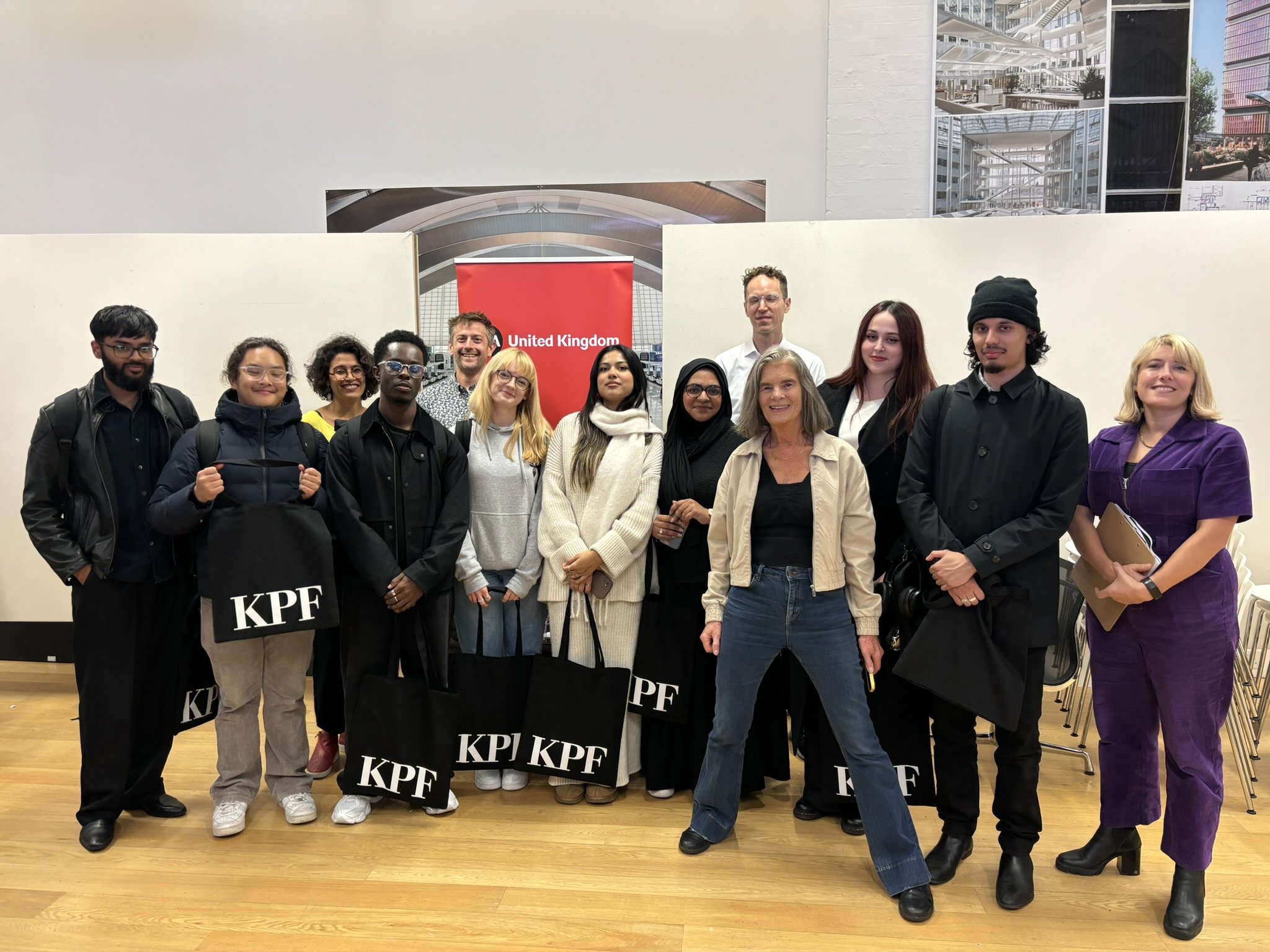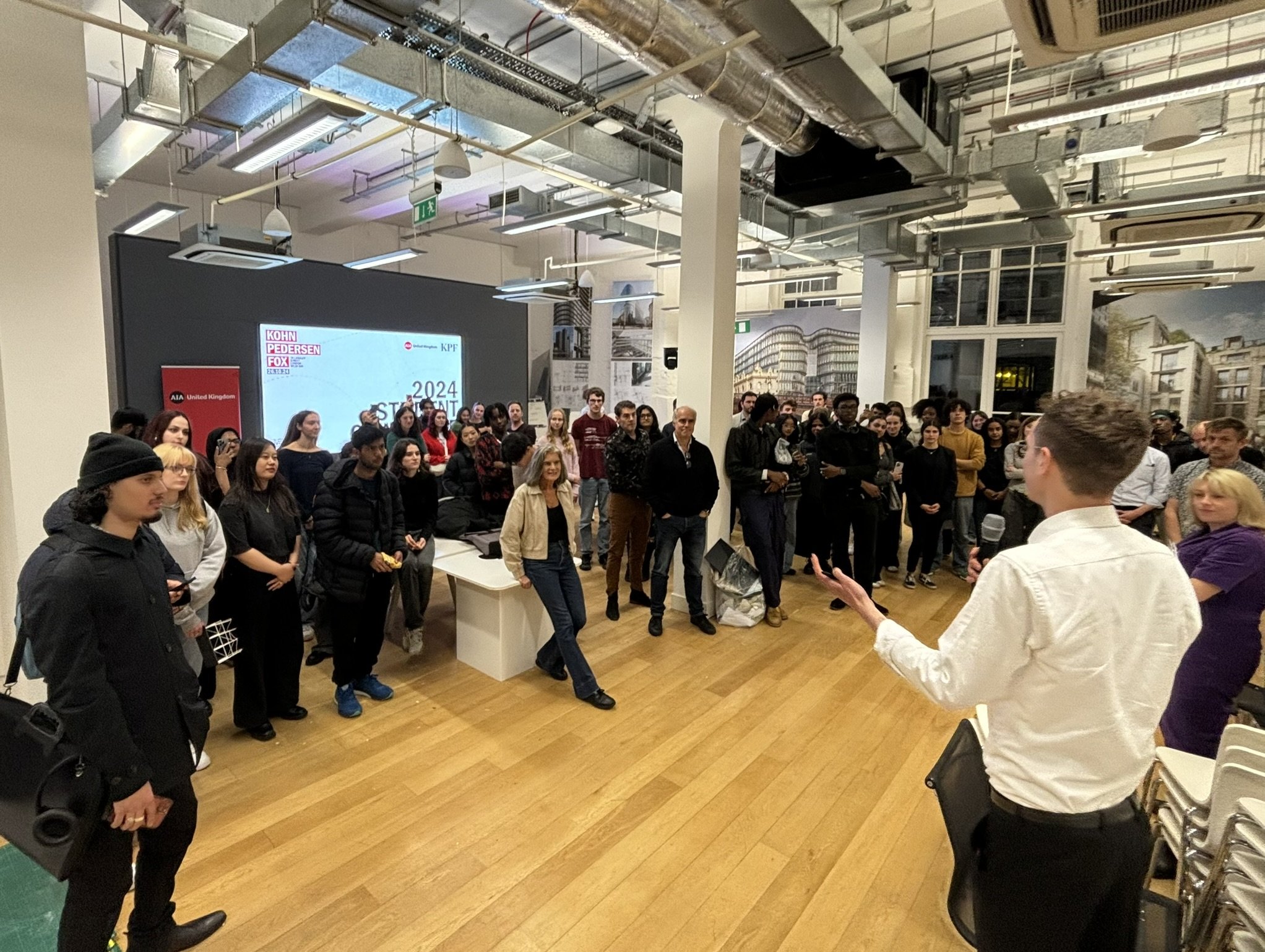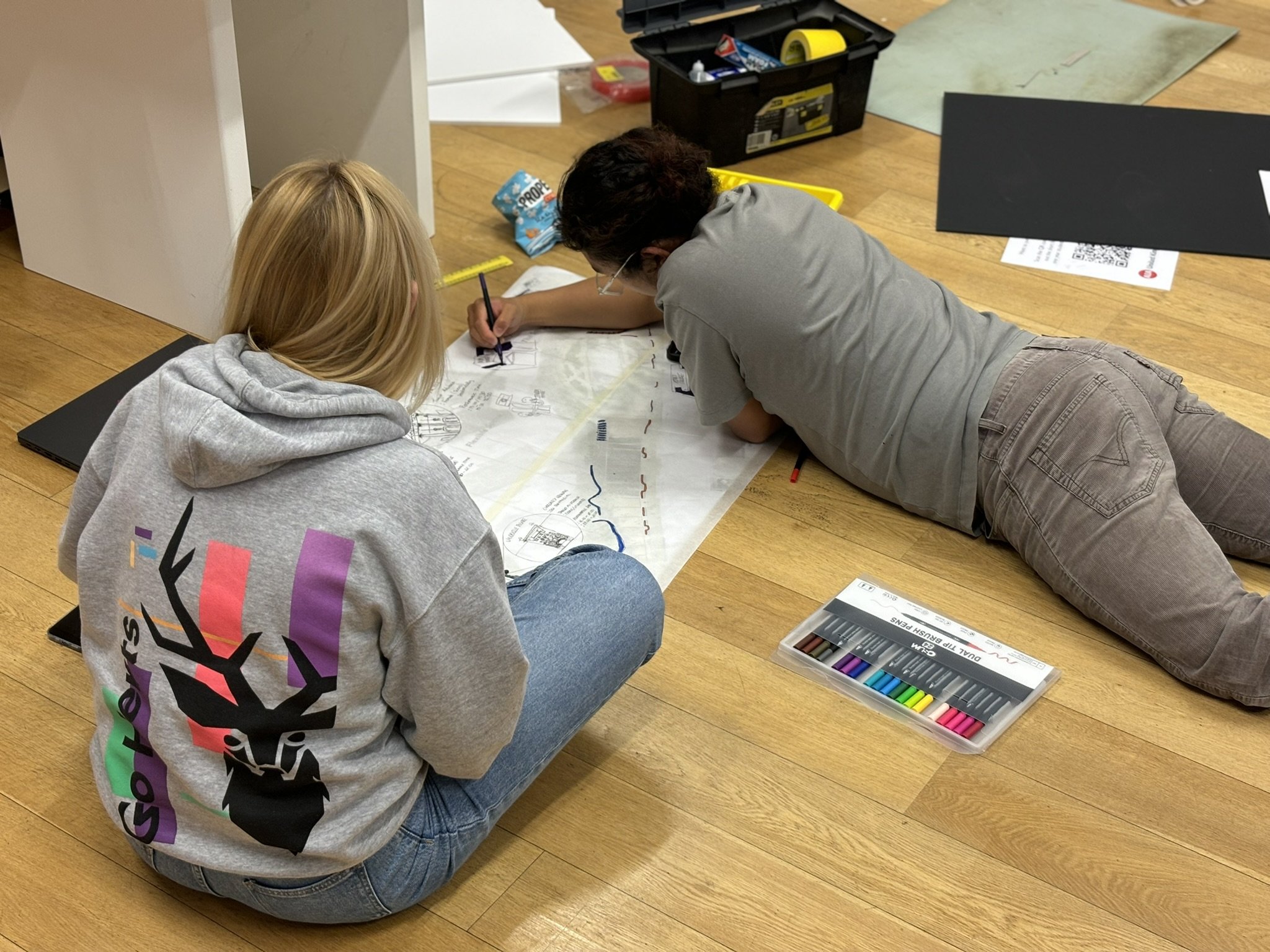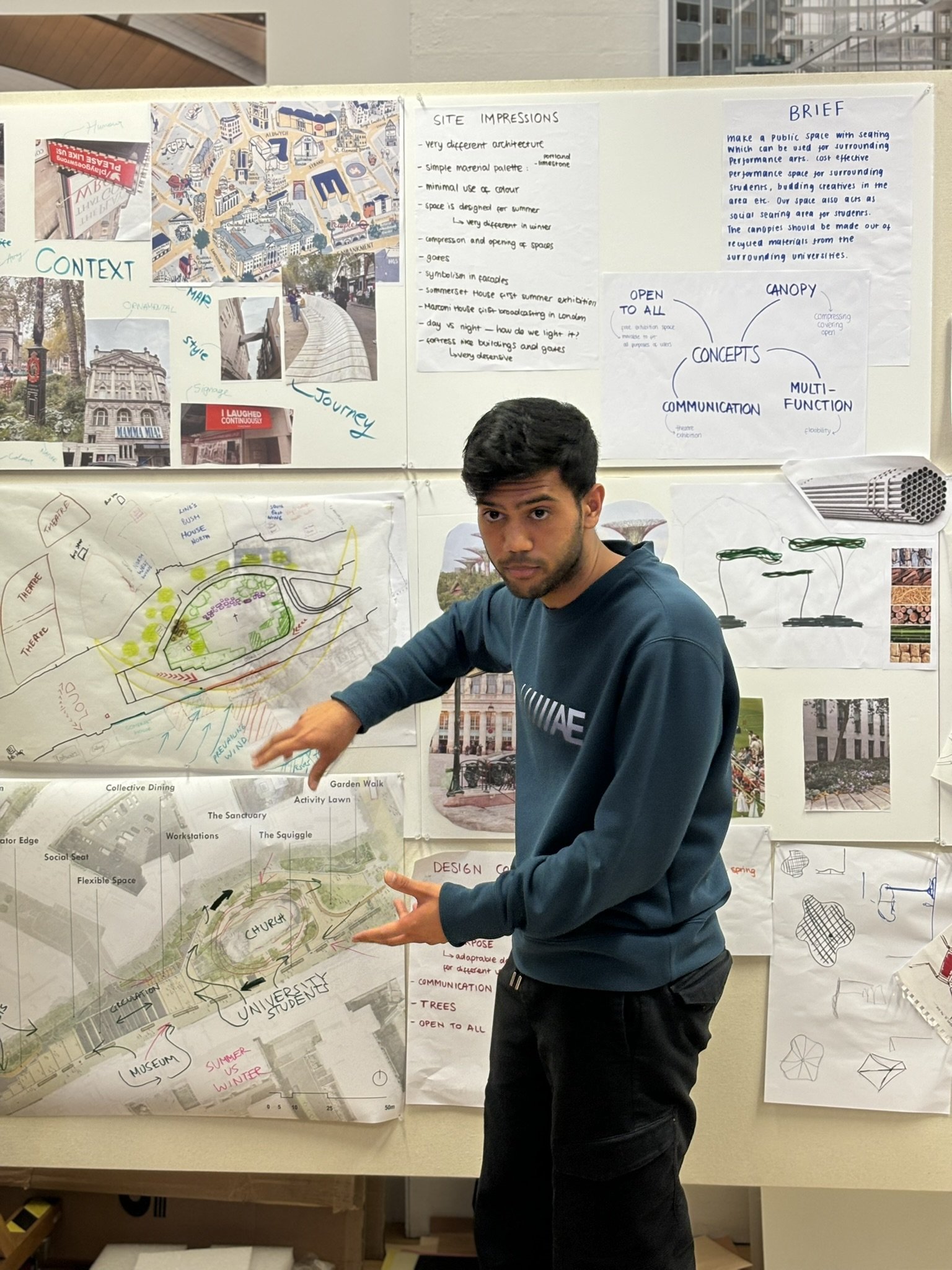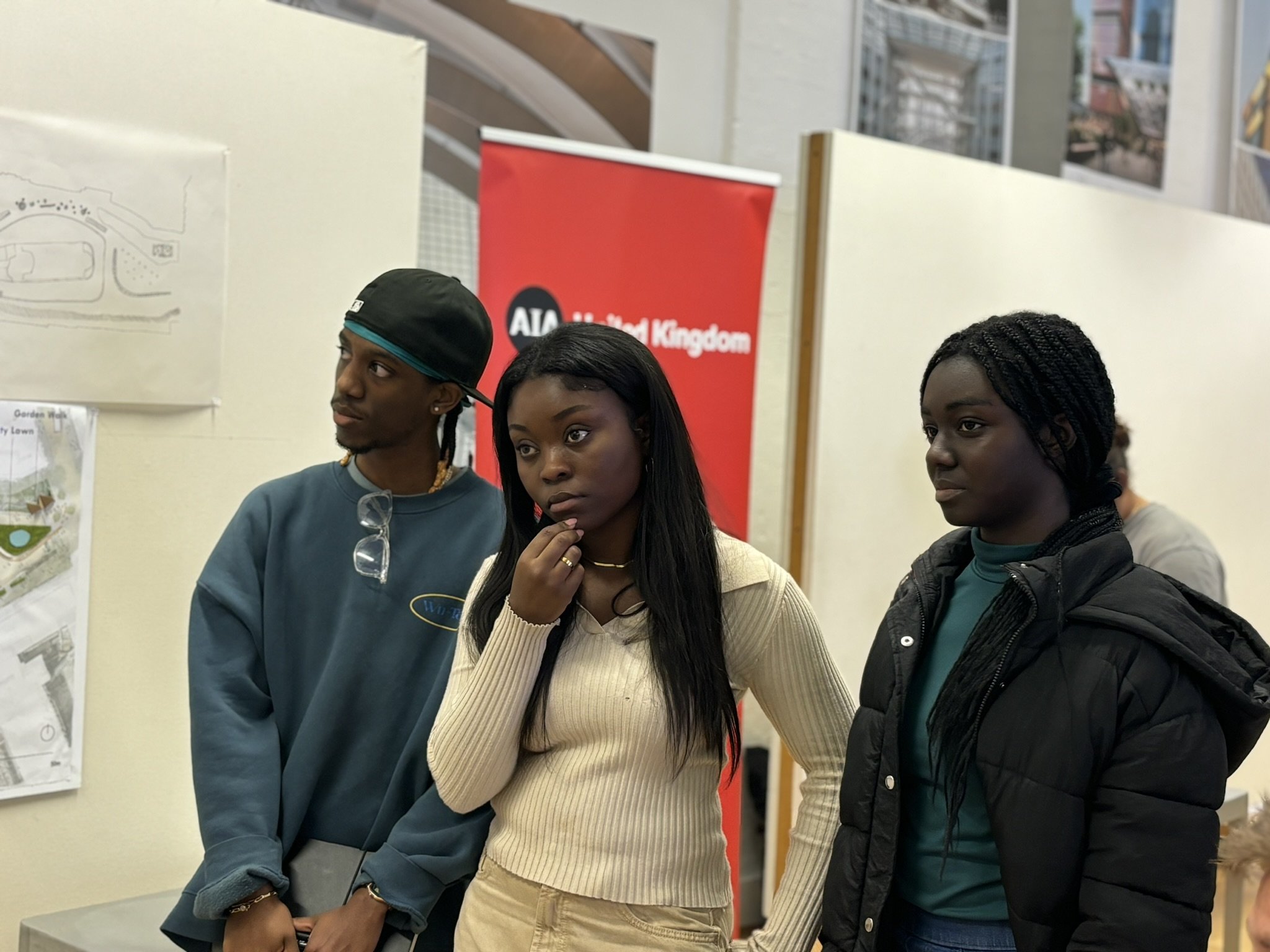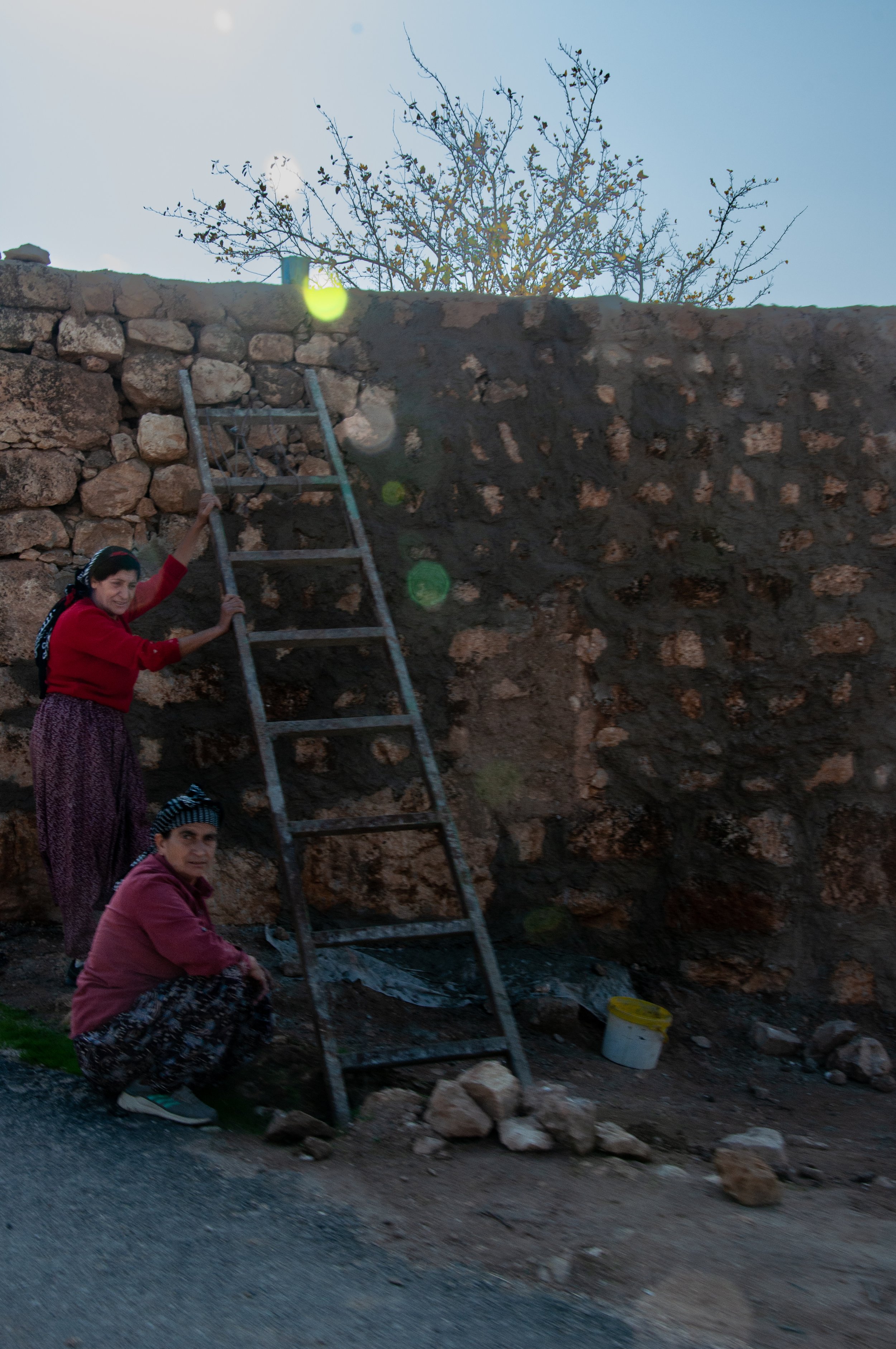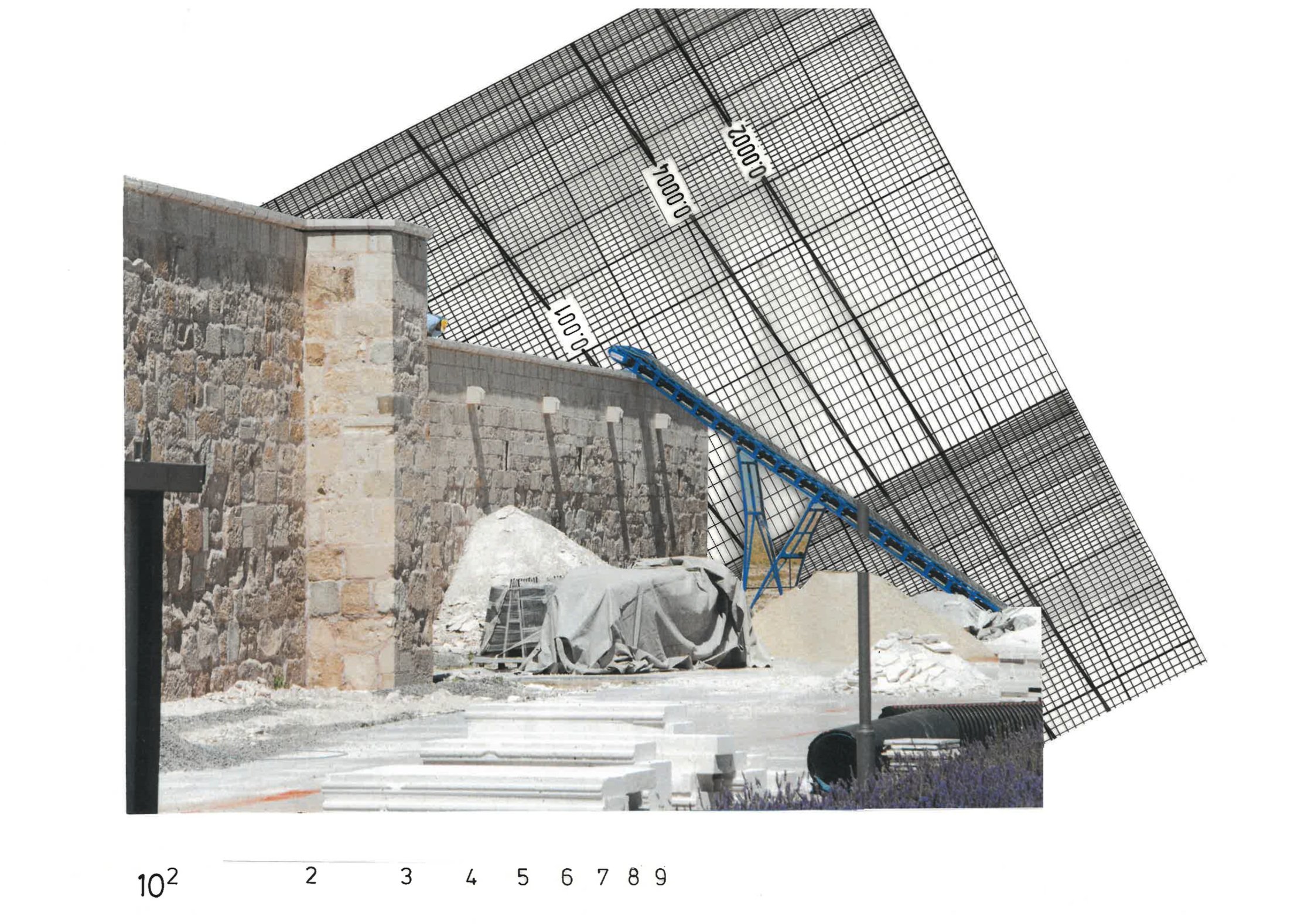AIA CONTINENTAL EUROPE CONFERENCE / Sofia, Bulgaria – Ancient Places in a Modern World
Fiona Mckay
View from the Conference hotel of government buildings with the Alexander Nevsky Cathedral in the distance and a yellow brick boulevard in the foreground.
There must be some architects who prefer not to travel, who relish their home grown attractions, and perhaps - as all architects aspire to do - even add to them. But there is also another group of architects that delights in exploring unfamiliar places, venturing outside comfort zones, trekking across the world, seeking new experiences. Some of these architects no doubt thoroughly research their destinations prior to arrival so they can quickly comprehend it.
However, this article is dedicated to an even more select group of intrepid, trekker architects - those AIA members who love to explore, but who arrive at a new destination without even the faintest idea of what they are about to experience.
Sixty or so such architects took it in good faith to visit Bulgaria for the 2024 October AIA Continental Europe Conference. Many of them registered on the understanding that they would be served a programme of iconic buildings, dramatic landscapes, generous food and even better camaraderie - all organised by others for their effortless consumption.
Fortunately, the conference organisers were up to the task. Any AIA conference organisation is not at all easy, but it helps satisfy the vague expectations of the unprepared when the destination is one of Europe’s ‘best kept secrets’. Perhaps WHY Bulgaria has remained a secret can be found in its complex and difficult history.
The span of Sofia’s history is manifest in the range of its architectural styles. A 4th century church cohabits with the early 20th century mineral baths (now a museum).
Ancient drinking fountains supply the Sofia inhabitants with mineral water, while monuments to 19th century revolutionary heroes overlook busy squares.
Bulgaria’s history began with the Thracians, then moved on to the Romans and Byzantines. After a period of Bulgarian wealth as a strong European power during intervals in the 8th to 10th and the 12th to 13th centuries, it was subjected to Ottoman rule starting in the late 1300s. The country achieved limited autonomy in the mid-1800s, but then local and world wars brought another period of decline and chaos. After being on the losing side in both WWI and II, it fell into the Soviet sphere until the 1990s. Bulgaria finally became a member of the European Union in 2007.
However, to understand Bulgaria’s cultural identity - and the otherwise seemingly long ‘gap’ in its architectural legacy from Byzantine/ Early Medieval to Baroque - one disastrous historical period must be more fully acknowledged. Through neglect and isolation under 500 years of Ottoman rule, a once great medieval power missed the Renaissance, the Great Ages of Exploration and Scientific Discovery, the Enlightenment and the Industrial Revolution. Meanwhile, its population sheltered away in small, difficult to access towns and mountain villages.
For those who are serious about history and even more serious about a more detailed history, please check out as a bare minimum Wikipedia HERE. There is no shame in researching a destination’s history after one’s departure.
Thursday Bulgaria is now determined to regain its place in the modern world and enthusiastically welcomed the AIA CE Conference at an evening reception – with local musicians (all music credits can be found at the end of the article) – held in the Bulgarian Union of Architects.
The US Embassy Cultural Attaché, Eric Brassil and the CEO of ‘Foundation America for Bulgaria’, Nancy Schiller, both greeted the attendees. Local dignitaries making presentations included the President of the Bulgarian Institute of Architects, Arch. Petar Dikov, and the former Minister of Regional Planning, Arch. Belin Mollov. Elizabeth Chu Richter, FAIA, the 2015 AIA National President, was a surprise guest at the event.
An unprecedented letter written on behalf of the President of Bulgaria, Rumen Radev, and read out at the reception, underlined the national importance given to architectural recognition: ‘I am confident that this conference will make Bulgaria better known in the world’.
Event organiser, Rada Doytcheva, FAIA, prepared an overview presentation entitled ‘The Stepping Stones of Culture in Bulgaria’. Its graphic timeline established Bulgaria’s cultural heritage in relation to Western Europe and Mediterranean cultural development and introduced the conference theme – ‘Ancient Places in a Modern World.’
From an image loving architect’s perspective, ‘Stepping Stones’ puts Wikipedia’s history in its place. See HERE.
Event organiser, Rada Doytcheva, FAIA; and guests, Arch. Petar Dikov, President of the Bulgarian Institute of Architects (SAB); Elizabeth Chu Richter, FAIA, 2015 AIA National President; and Eric Brassil, Cultural Attache US Embassy in Bulgaria, greet the audience.
Sitting with the AIA CE audience, other dignitaries, Nancy Schiller, CEO Foundation America for Bulgaria, sponsor for the Plovdiv event (front) and Zdravko Petrov, Founder Historic Routes (2nd Row), await their speaking slots.
Friday A morning walking tour of downtown Sofia began along delightful and unexpected yellow brick boulevards and featured Baroque mansions, early Christian and Russian churches, a renovated market (with unexpected entertainment from a world famous choir) plus the great cathedral of Alexander Nevsky. Keeping its most ancient places alive, Roman ruins have been integrated into the modern city.
Ruins from the ancient Roman city of Serdica – next to Baroque buildings and distant mosques - are preserved within the modern city.
The afternoon then included a series of presentations on Sofia’s history and growth by local architects and town planners. Speakers included: Prof. Dr. Arch. Todor Krestev, UNESCO Expert; Arch. Dessi Dimitrova, President Delinear; Dr. Arch. Maria Davcheva, Editor Architectura Magazine. The later dinner was accompanied by a renowned harpist.






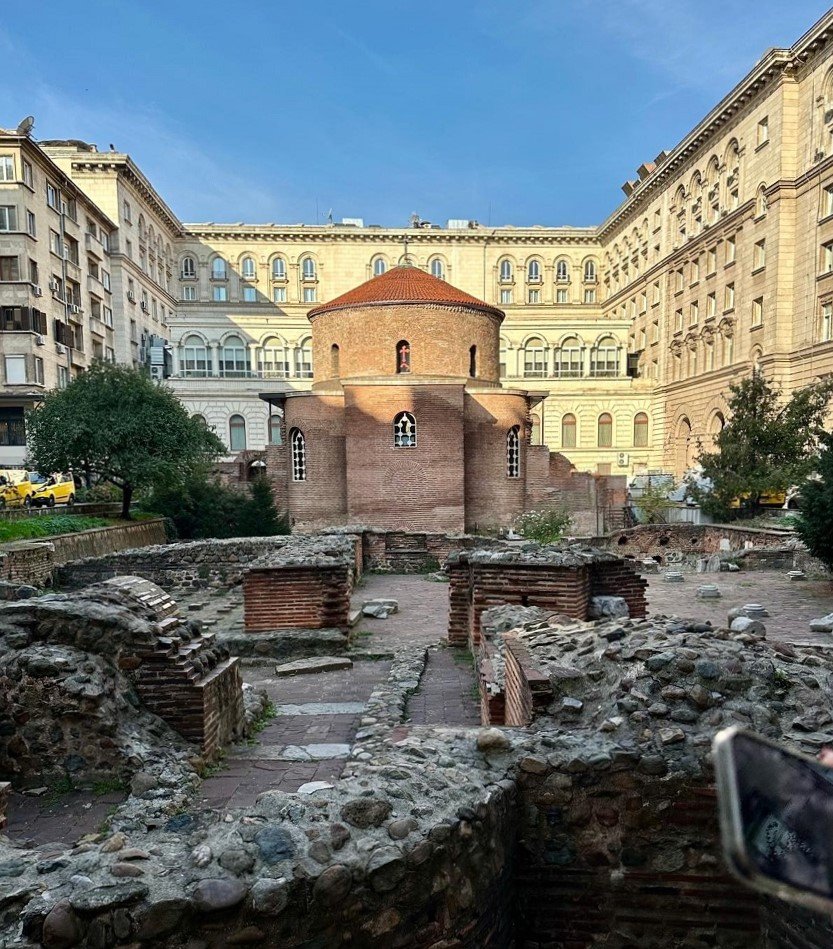









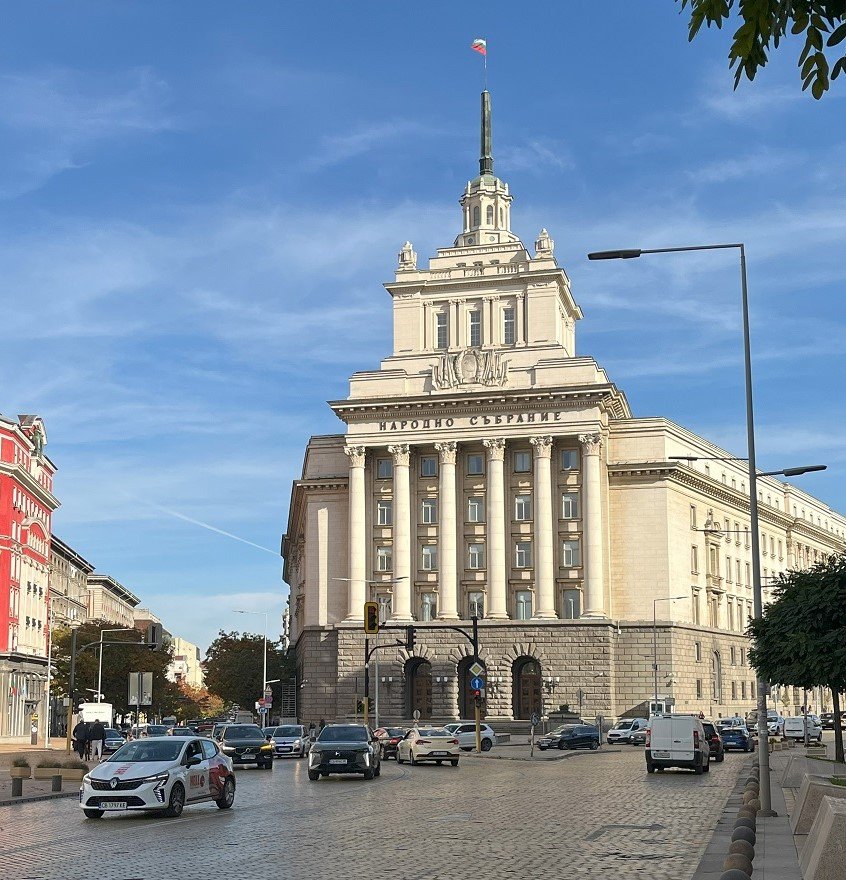










Saturday The group left Sofia early for a bus ride to Plovdiv, Bulgaria’s second largest city and the oldest city in Europe still functioning. The visit was in three parts: a tour of the old hill town, a stopover at Plovdiv’s Roman amphitheatre and a visit to ancient mosaics preserved in a modern museum, the Bishop’s Basilica.
Lectures on the challenges of historic preservation within a modern city – along with a reception and operatic entertainment by State Opera Plovdiv Soloists – were sponsored by Nancy Schiller, who has supported the Basilica from its inception. The first speaker, Prof. Dr. Elena Kantareva, a world renown scholar and restaurateur, has been credited with spearheading the preservation initiative.
Other speakers included: Arch. Krassimir Todorov and Arch. Mariana Krachanova, designers of the Bishop’s Basilica museum; Arch. Ilko Nikolov, President Plovdiv SAB Chapter; Dr. Arch. Velina Pandjarova, UACEG Chair Theory and History of Architecture.
It is said that Plovdiv - originally named Philippopolis - rivalled Rome with its seven surrounding hills and its dramatic amphitheatre. Today, it is a UNESCO heritage city.
Old Plovdiv offered steep, cobbled streets and decorative wood houses, while in the modern city centre,
the new Bishop’s Basilica museum has been built to protect and display the early Christian structure and its extensive mosaics.
AIA CE traditionally holds a Gala Dinner on Saturday night. Not only were the guests regaled with a violin and harp duet, the event organisers were celebrated and the winners of CE’s rejuvenated Design Awards were also announced.






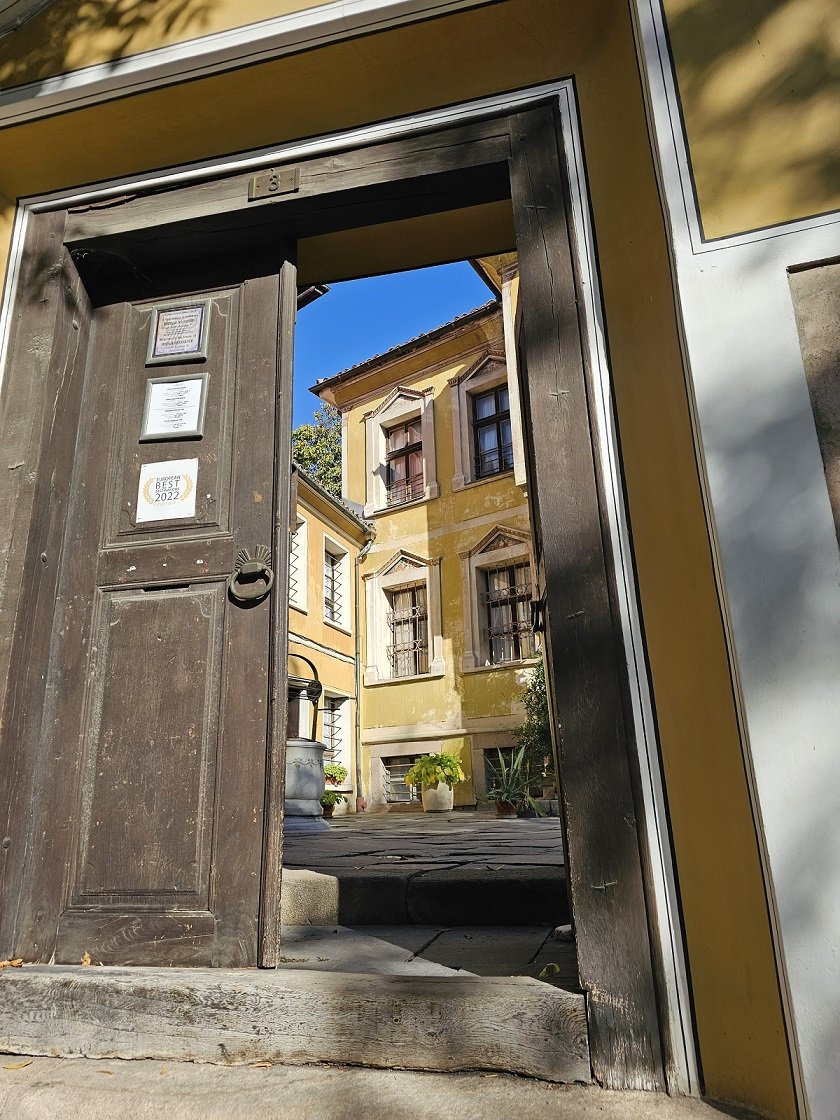

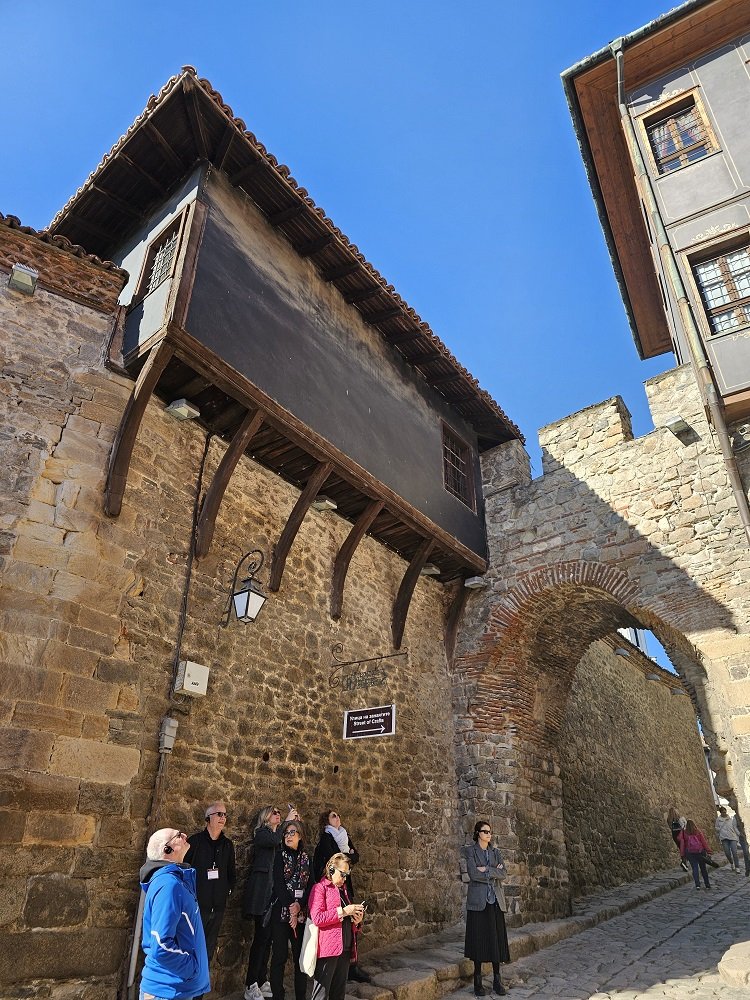



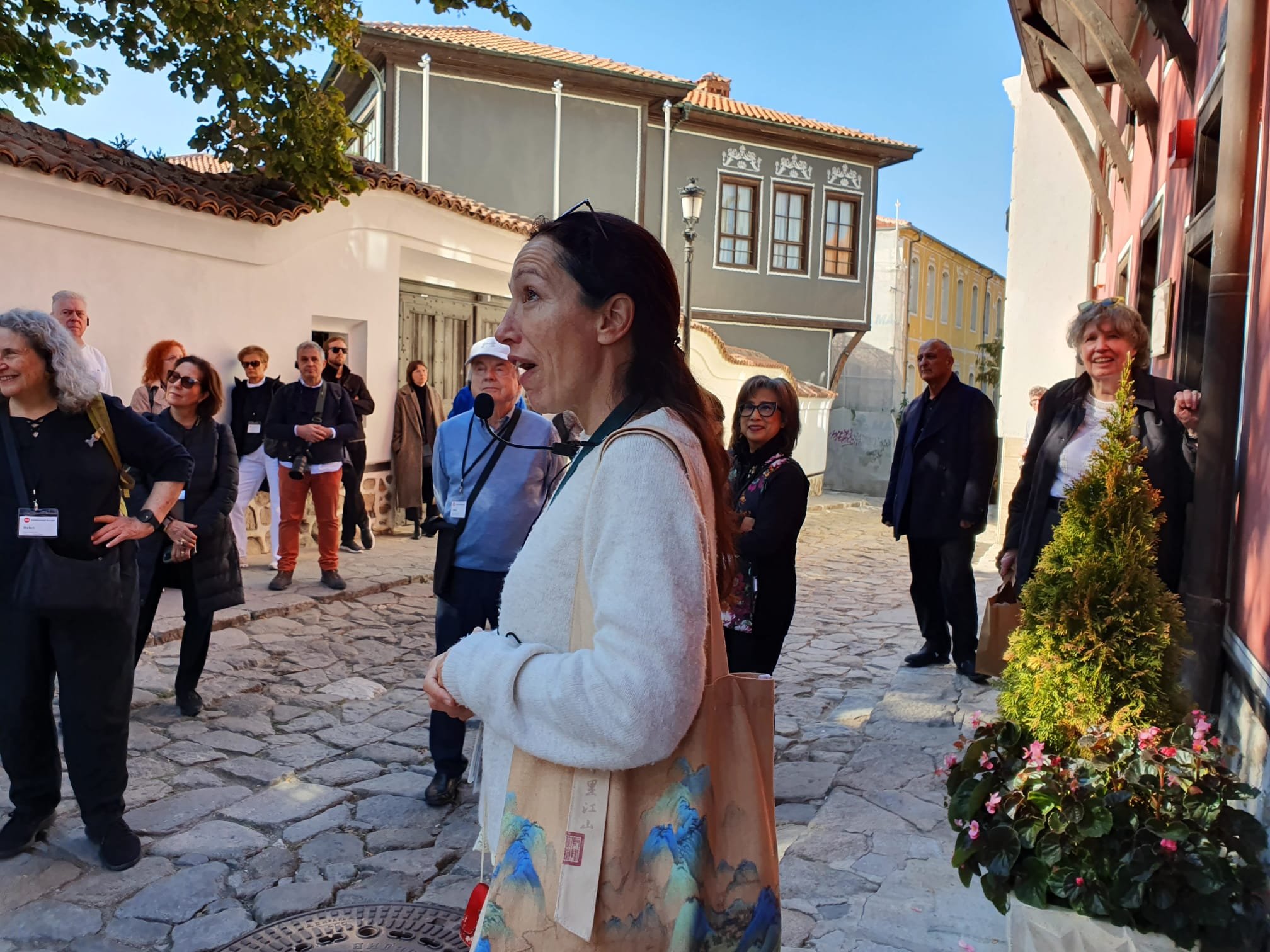










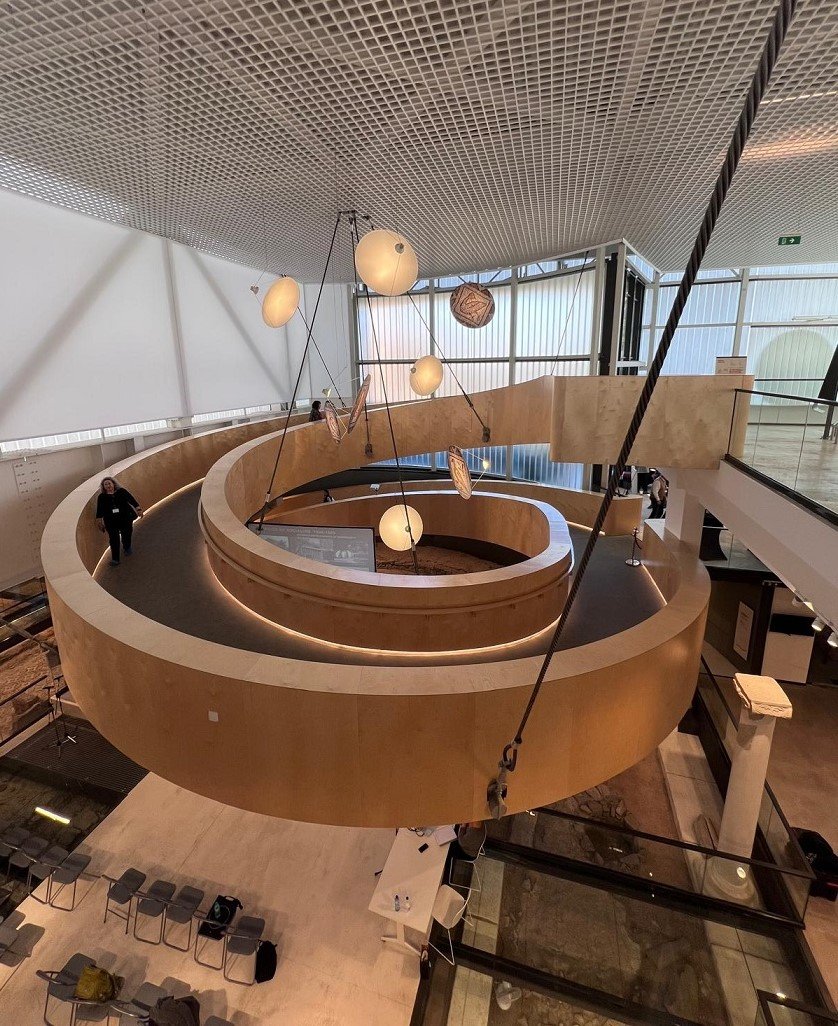

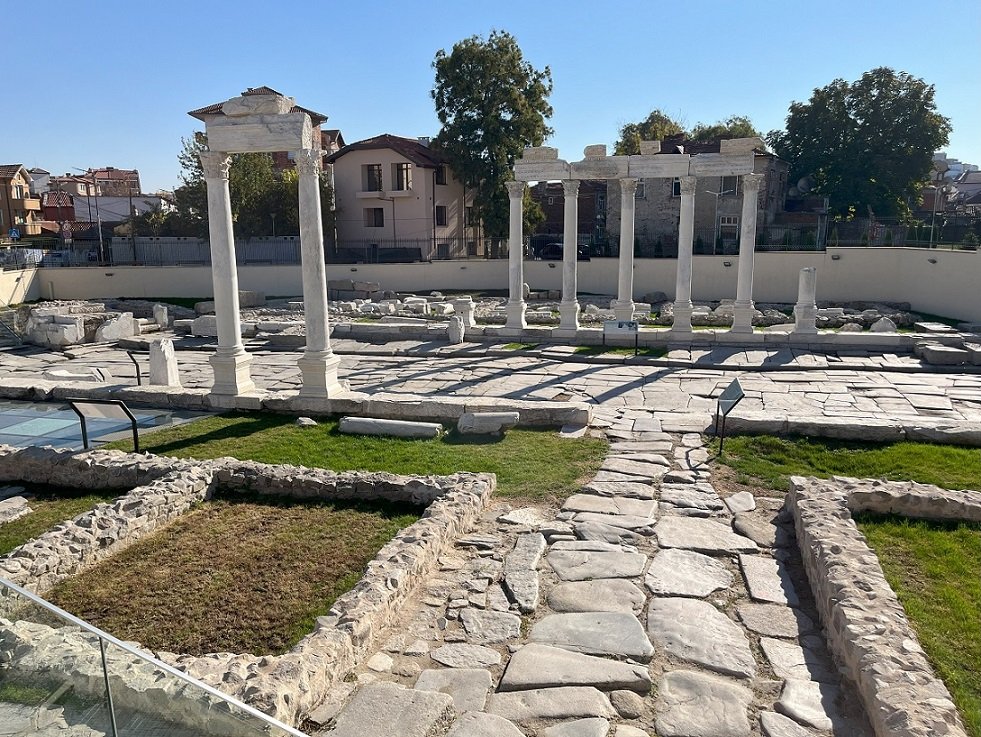


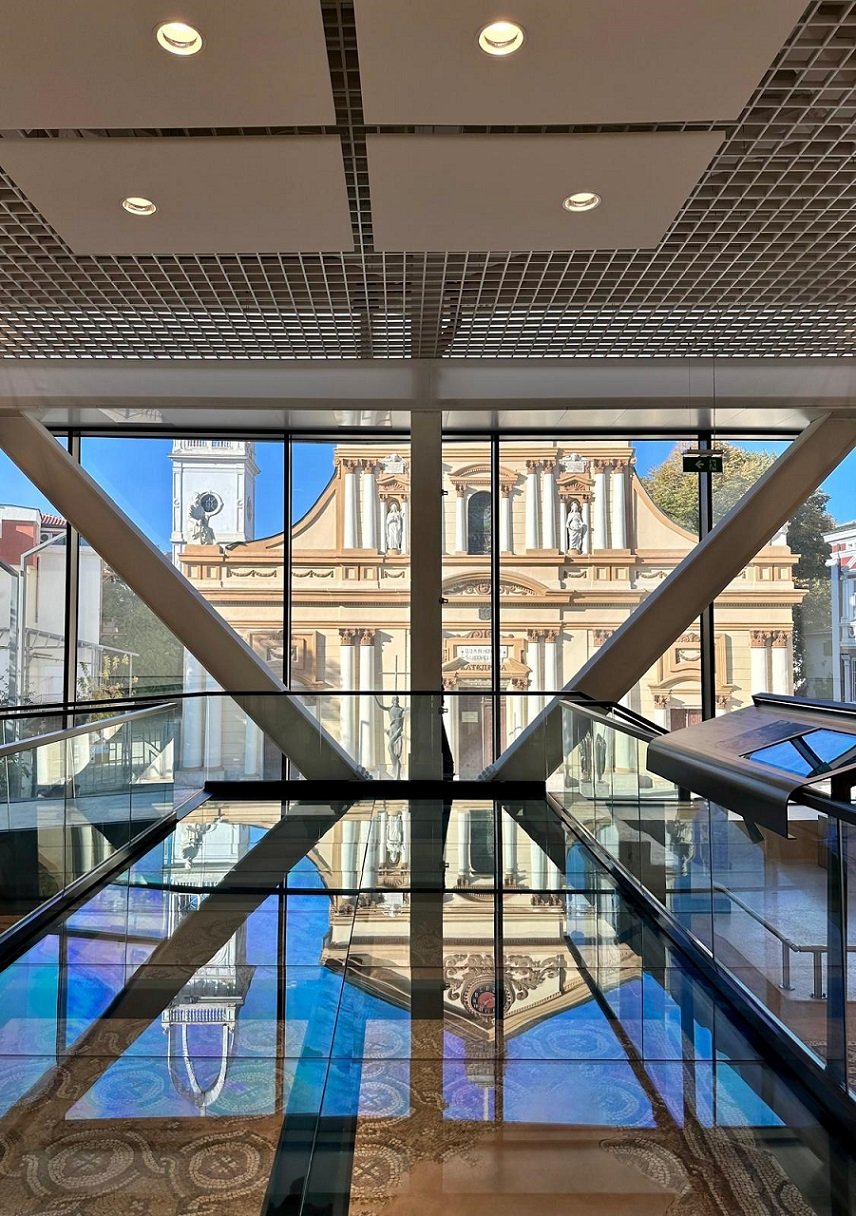

Sunday AIA Architects were given a hint on what to expect at the Rila Monastery – another UNESCO site, several miles from Sofia - through conference literature. However, the attendees were unprepared for the full drama of the site once they walked through the entrance arch. Their awe generated the best photography of the conference as shown in the slideshow below.
After a lengthy stay at the monastery, the return trip to Sofia included a stop at the Natural History Museum, housed in a Soviet era government building. The historical collections were fascinating, while the unusual building became another unexpected treat.
Through the arch Into a dramatic world of stripes, colour and mountain vistas.
The Soviet grandeur in the former Parliament defied categorisation, and almost overwhelmed the History Museum’s treasures.









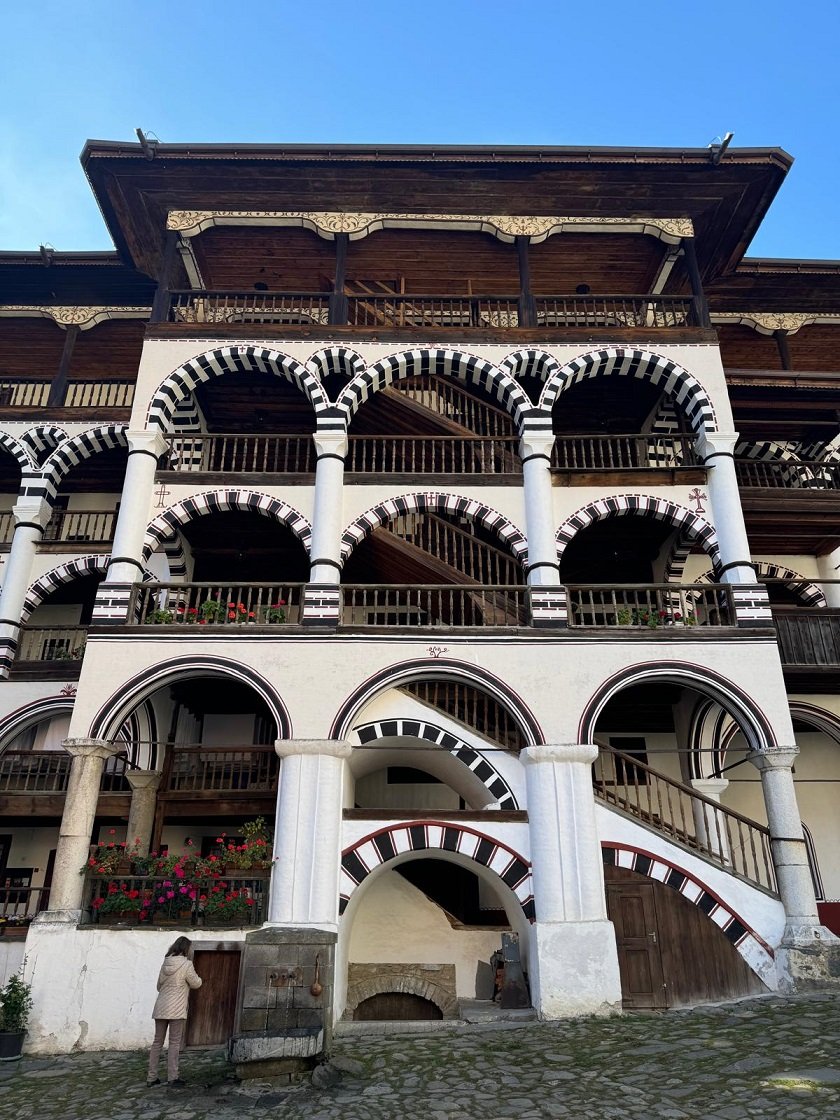




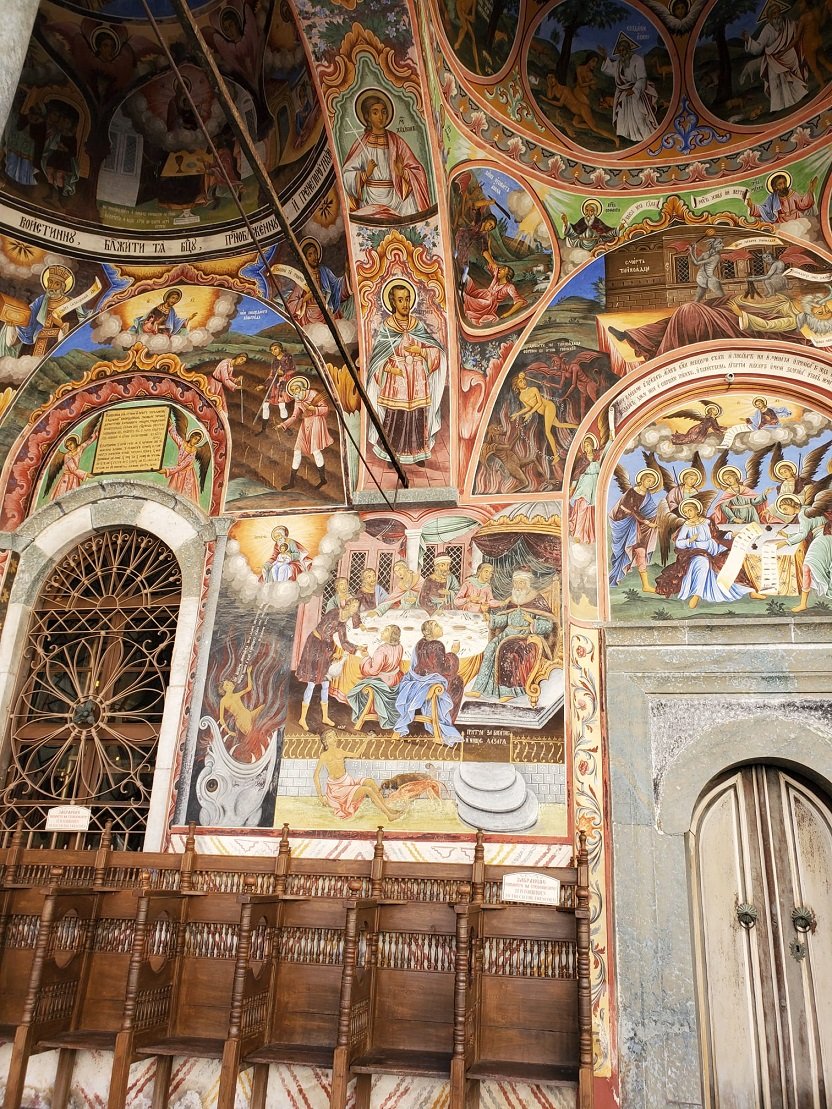
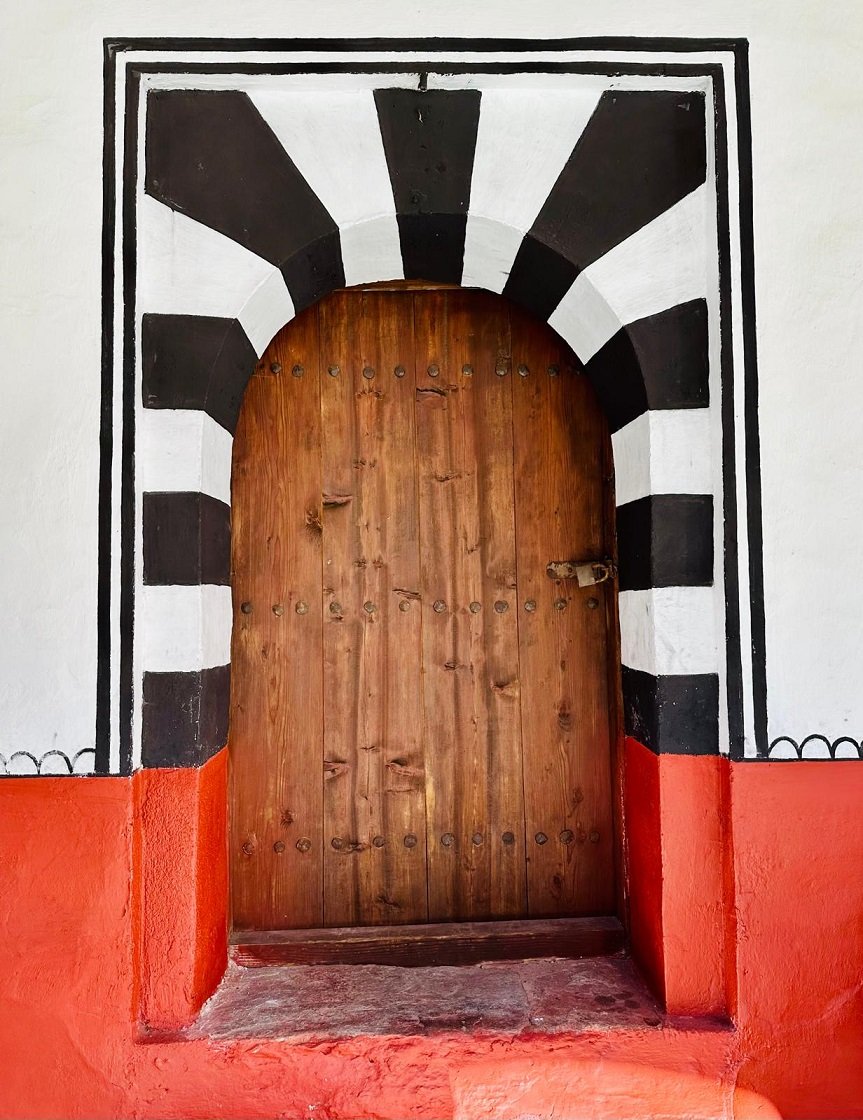
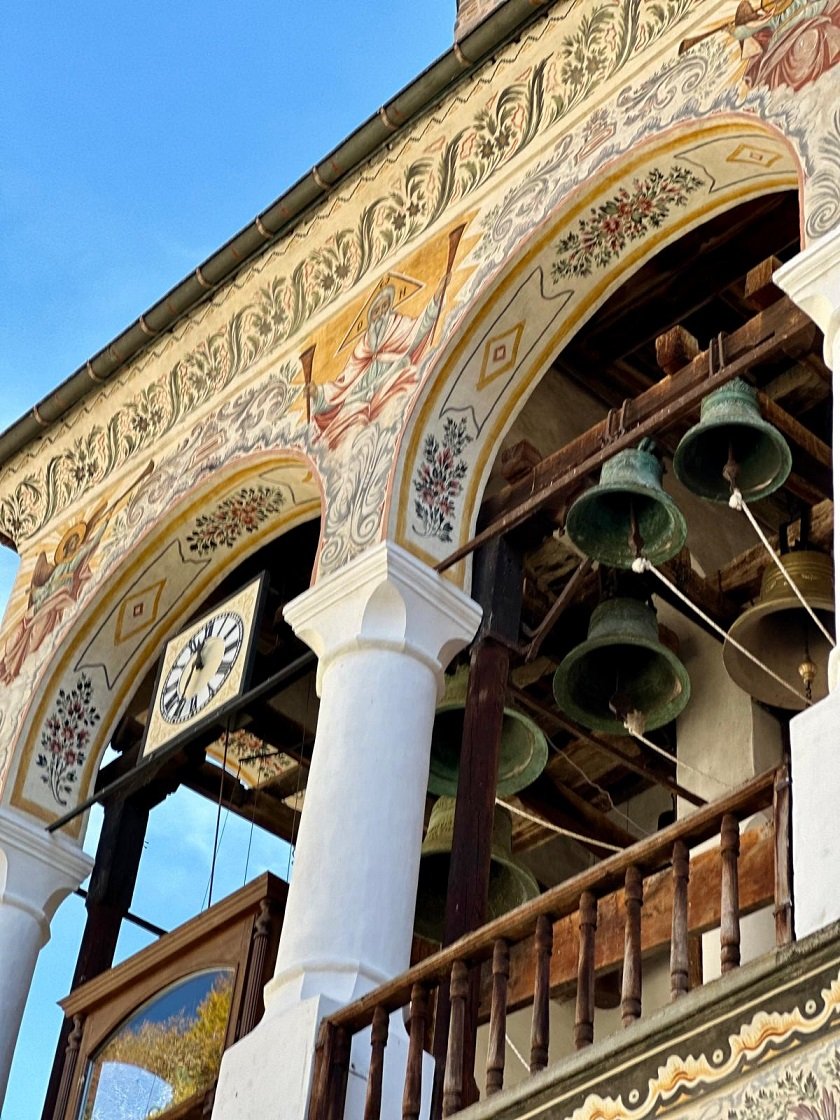
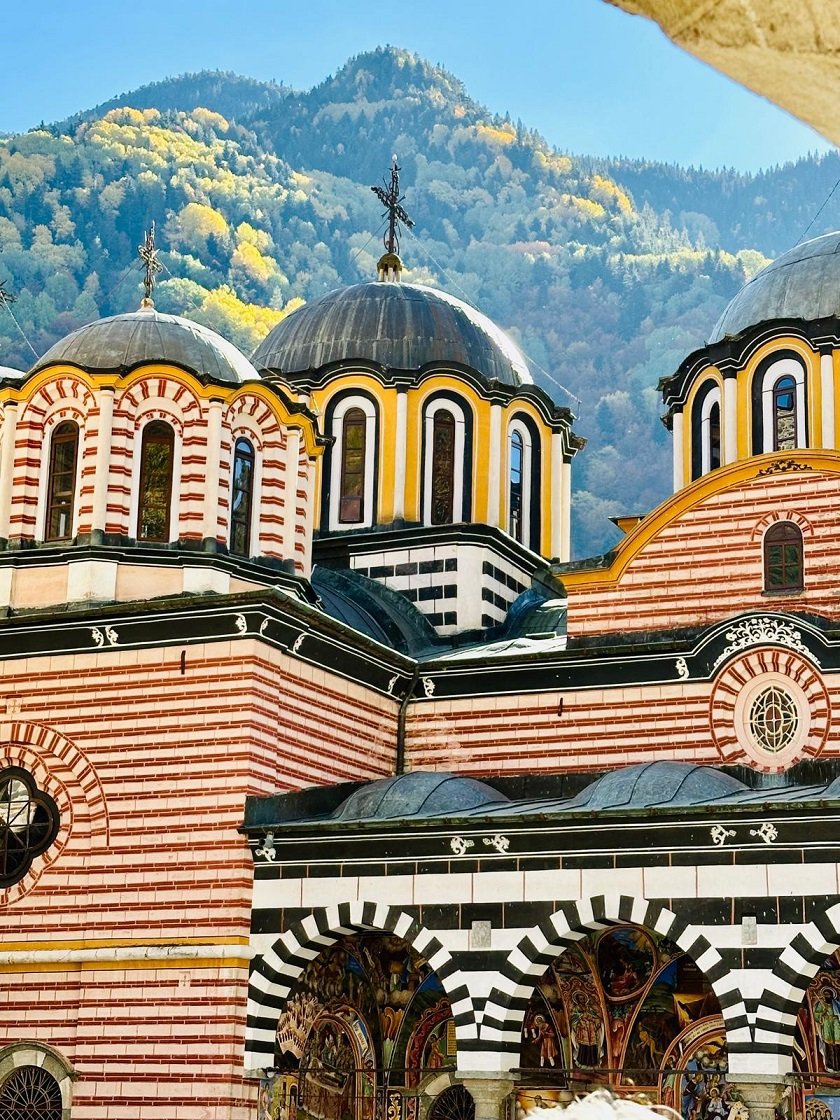

Monday Extension Day For those who wanted more – and there was a full busload who did – the extra Extension Day took a long trip north towards the Romanian border to Veliko Turnovo, the ancient capital of Bulgaria in the days of its pre-Ottoman prime. It is still a major city with a dramatic setting – the city of a thousand windows and the one Tzarevetz fortress.
Multiple viewpoints generously inserted in the townscape by the local city planners expose dramatic vistas of Veliko Turnovo, built around sharp river bends.
A wine tasting lunch with the mayor and a series of lectures and discussions led by local architects ended the day and the conference. Speakers included: Dipl. Ing. Nikolay Nikolov; Dr. Arch. Petar Nikolov; Arch. Stefan Conev, President of SAB chapter; Arch. Radomir Dankov.









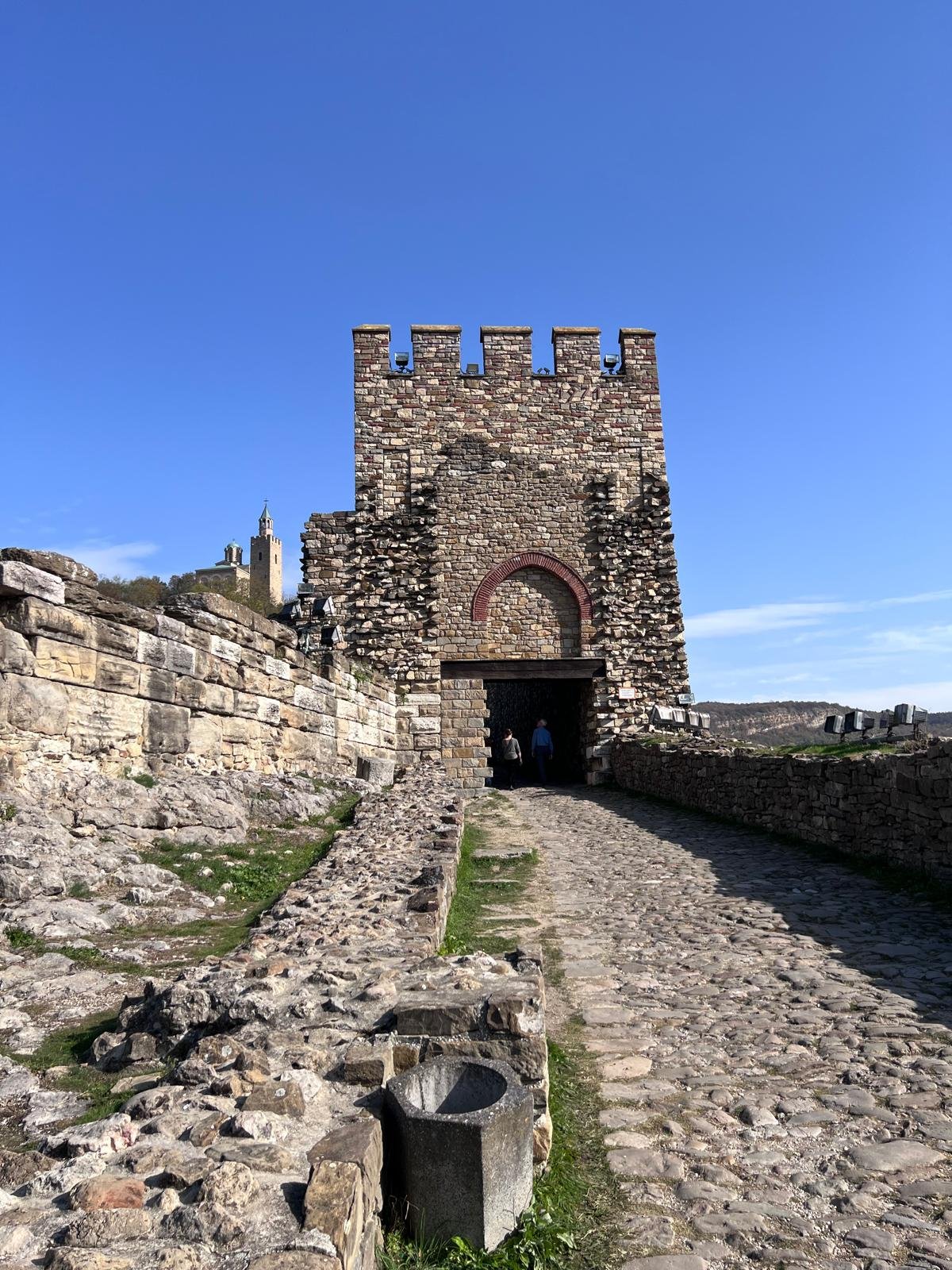

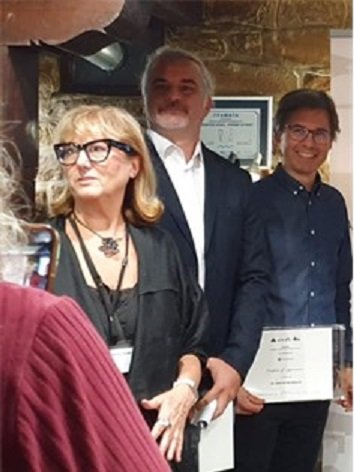

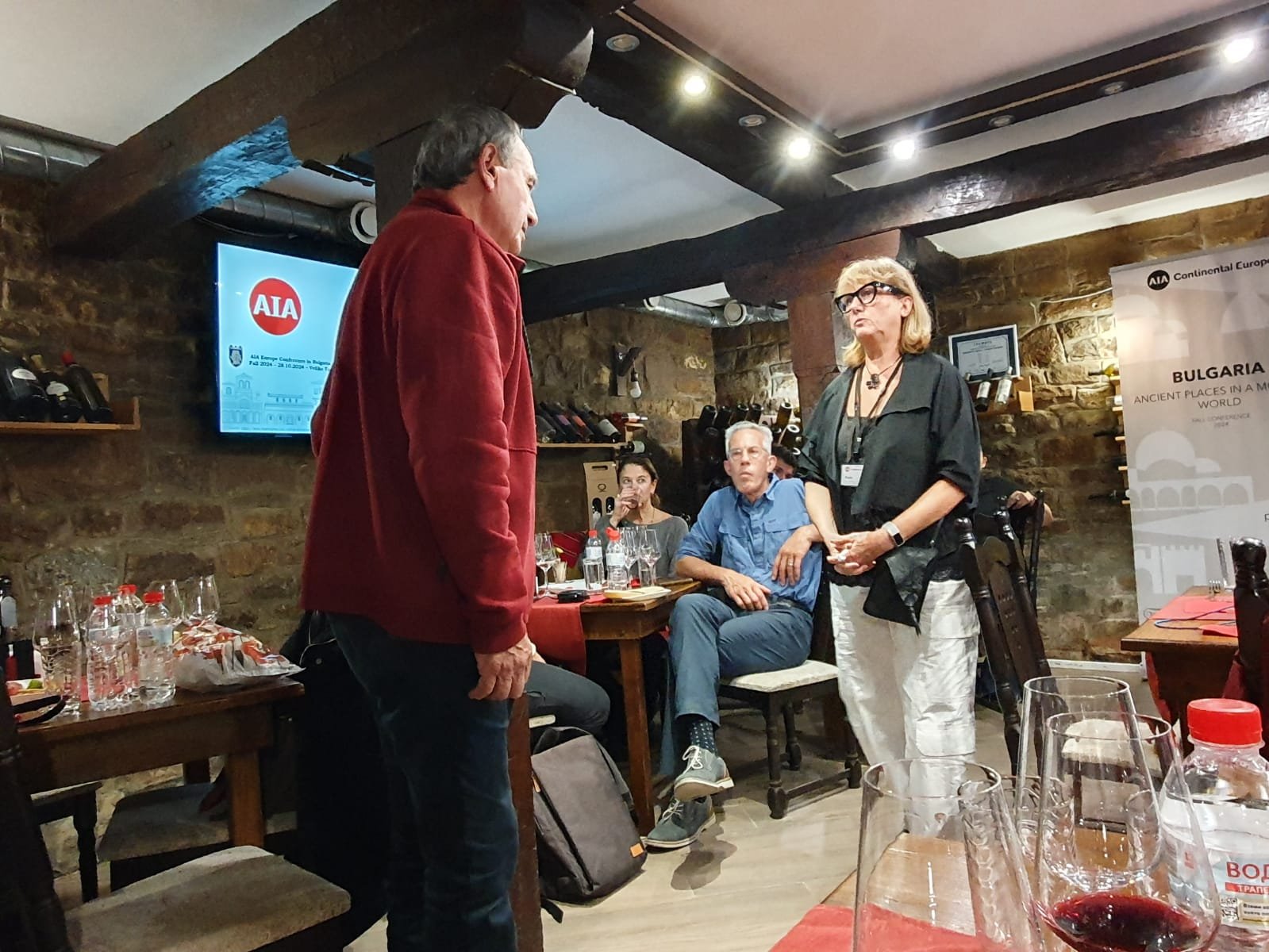
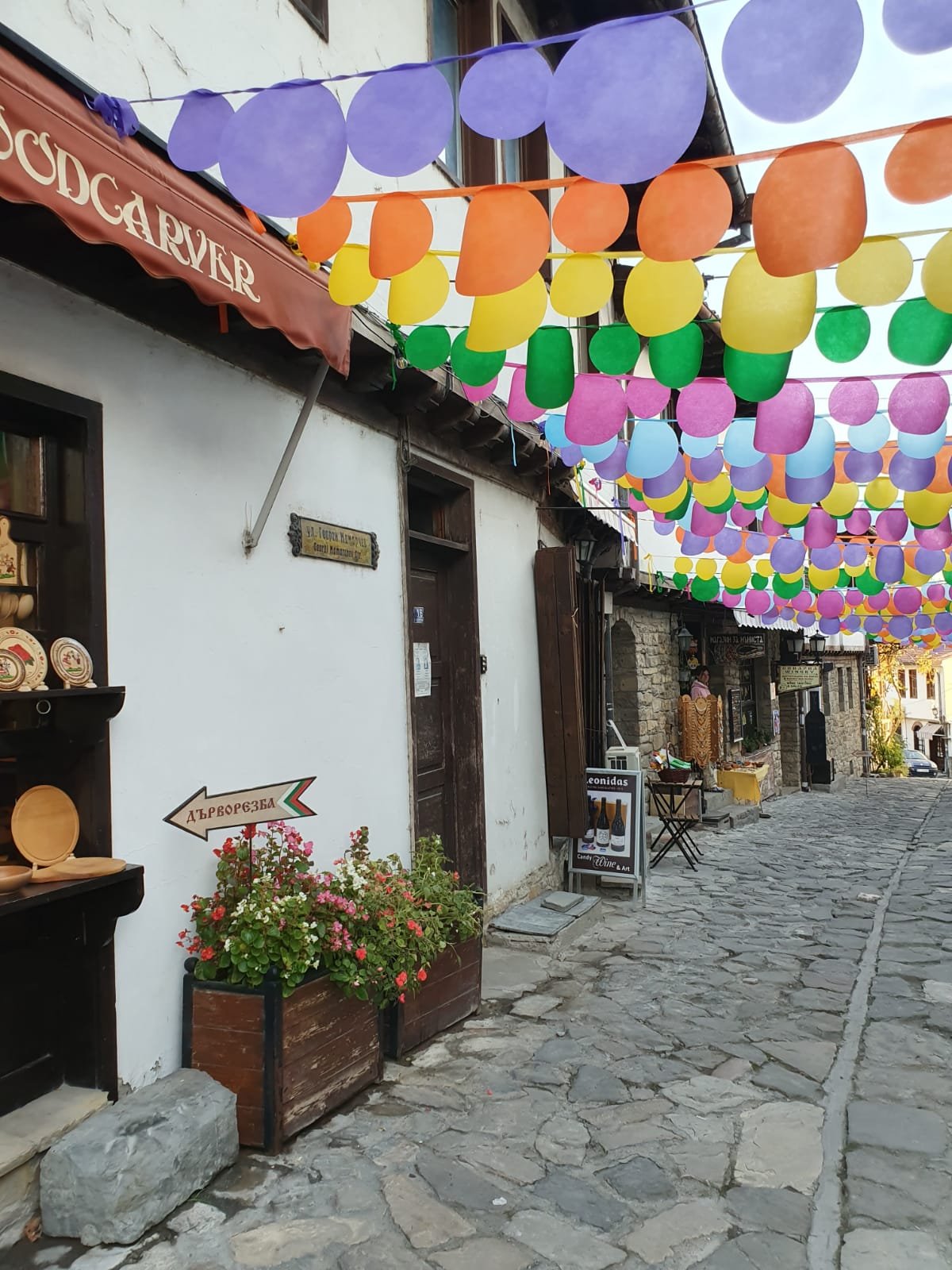
The event organiser, Rada Doytcheva, FAIA,celebrated her birthday immediately after the conference. The birthday card by attendee, Dominique Tomasov AIA, from Barcelona, expressed the sentiments of all.
The Sofia Conference Programme is included HERE. Additional information - including Presenter Notes - on the Bulgaria event and also on past and future AIA CE conferences can be found on the AIA CE website HERE and HERE. These international conferences are a bargain and the Continuing Education Credits are significant.
The 2025 AIA CE April Conference in Cork, Ireland, will be co-hosted by AIA CE and AIA UK – a welcome joint effort.
Written by L D King, AIA
On behalf of AIA Continental Europe and AIA United Kingdom
FURTHER CREDITS:
Event Organisation Team: Rada Doytcheva FAIA, Conference Chair; Sasha Doytcheva, Architecture MA student RCA London; Jina Son, Humna Farid and Michael Ocejo, RADA Architects (www.rada-arch.com); Ray Spano, AIA, AIA CE France Director; Irene Reidy, AIA CE Administrator; Eli Hantova, SAB Union of Architects of Bulgaria (https://bularch.eu/); Desi Dimitrova, Delinear (https://delinear.bg/).
Event Planner and Event Managers: Daniela Nakova, Tempora Travel (www.temporatravel.com); Manager Violeta Milusheva, Director, and Deni Peeva, Events Manager Intercontinental Hotel (www.intercontinental.com/sofia).
Special credits: Svetoslav Stankov, Consul General of the Republic of Bulgaria in Chicago (https://www.mfa.bg/en/embassies/usagc3/1930).
Photographs: All photos by Conference attendees, and also by Ivo Oreshkov (https://oreshkov.bg/).
Music: Music played a special part of the programme and the references here are included at the special request of Rada Doytcheva to encourage further familiarization with Bulgarian culture:
Day One Opening Reception
Fanny Koutzarova, Piano and Ventzislav Trifonov, Clarinet
See HERE.
Day Two Ulpia Serdika Ruins
TE DEUM ADORAMUS Women’s Chamber Ensemble
Dinner “Pri Orlite” (With the Eagles)
Angela Madjarova, Harp
Day Three Plovdiv at the Bishop’s Basilica
State Opera Plovdiv Soloists: Evgenia Ralcheva, soprano, Vera Girgonova. soprano, Victor Ibrishimov, Alper Unluturk / Liliana Barzeva (introductions)
See HERE.
At Gala Dinner at the Intercontinental
Denitza Dimitrova, Harp and Ivan Penchev, Violin
See HERE.













